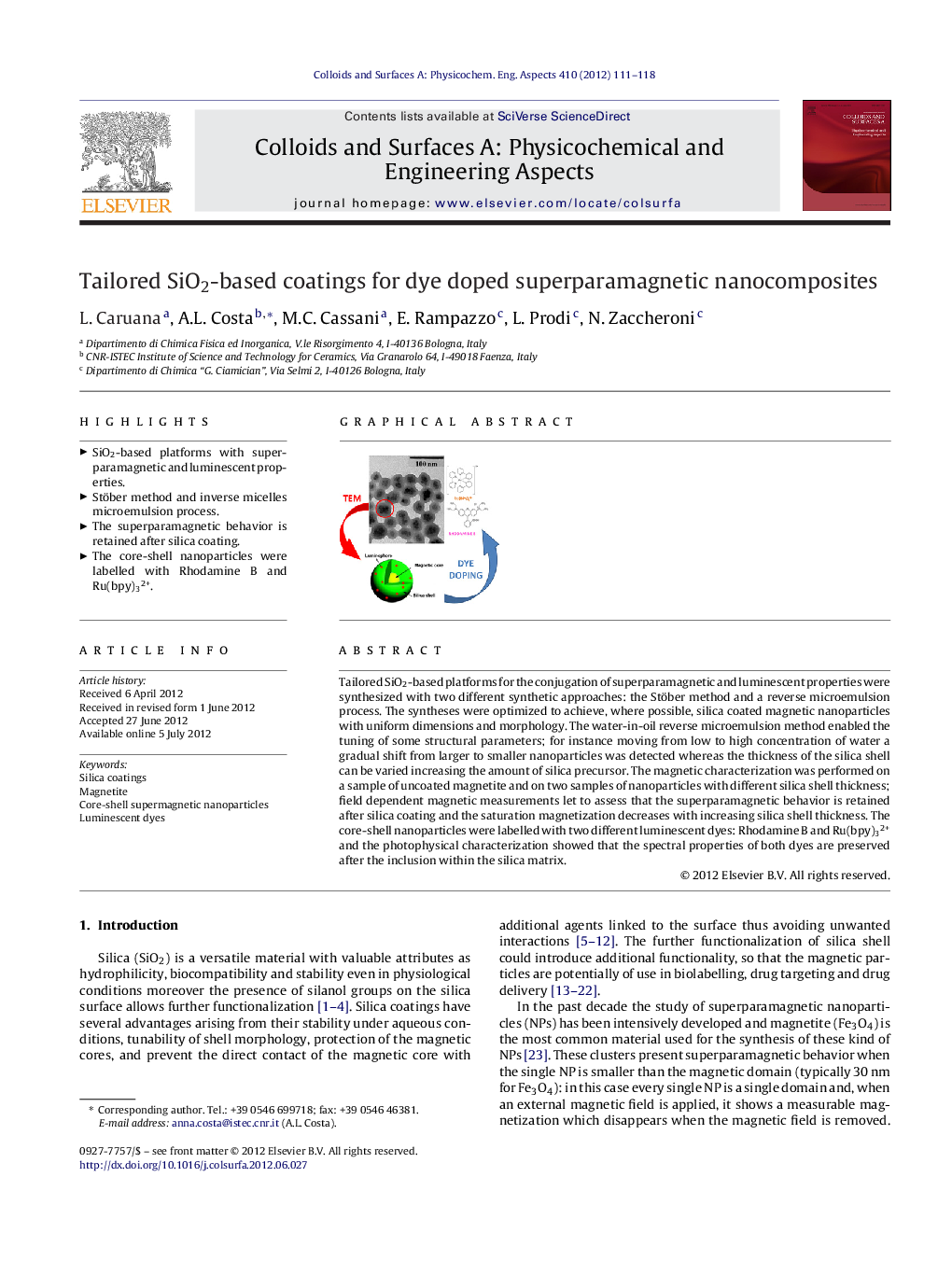| Article ID | Journal | Published Year | Pages | File Type |
|---|---|---|---|---|
| 594048 | Colloids and Surfaces A: Physicochemical and Engineering Aspects | 2012 | 8 Pages |
Tailored SiO2-based platforms for the conjugation of superparamagnetic and luminescent properties were synthesized with two different synthetic approaches: the Stöber method and a reverse microemulsion process. The syntheses were optimized to achieve, where possible, silica coated magnetic nanoparticles with uniform dimensions and morphology. The water-in-oil reverse microemulsion method enabled the tuning of some structural parameters; for instance moving from low to high concentration of water a gradual shift from larger to smaller nanoparticles was detected whereas the thickness of the silica shell can be varied increasing the amount of silica precursor. The magnetic characterization was performed on a sample of uncoated magnetite and on two samples of nanoparticles with different silica shell thickness; field dependent magnetic measurements let to assess that the superparamagnetic behavior is retained after silica coating and the saturation magnetization decreases with increasing silica shell thickness. The core-shell nanoparticles were labelled with two different luminescent dyes: Rhodamine B and Ru(bpy)32+ and the photophysical characterization showed that the spectral properties of both dyes are preserved after the inclusion within the silica matrix.
Graphical abstractFigure optionsDownload full-size imageDownload as PowerPoint slideHighlights► SiO2-based platforms with superparamagnetic and luminescent properties. ► Stöber method and inverse micelles microemulsion process. ► The superparamagnetic behavior is retained after silica coating. ► The core-shell nanoparticles were labelled with Rhodamine B and Ru(bpy)32+.
